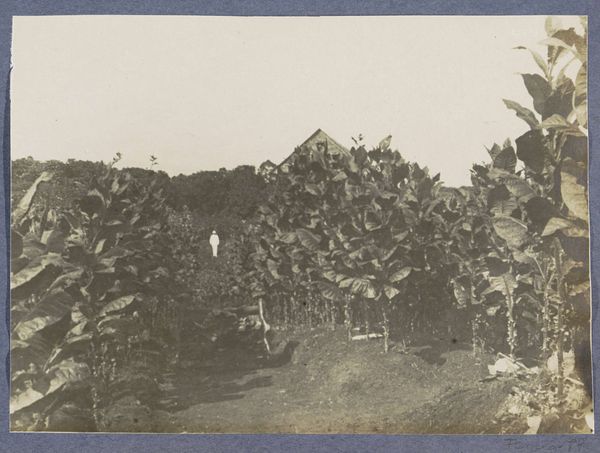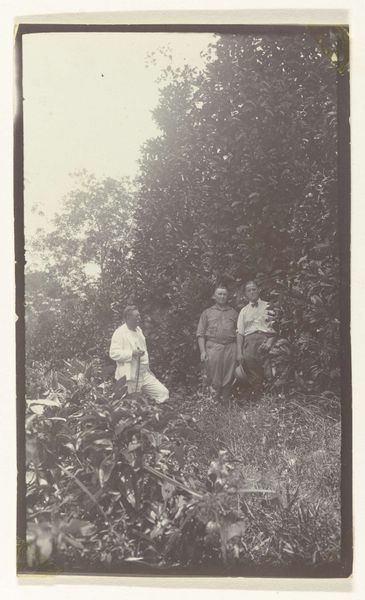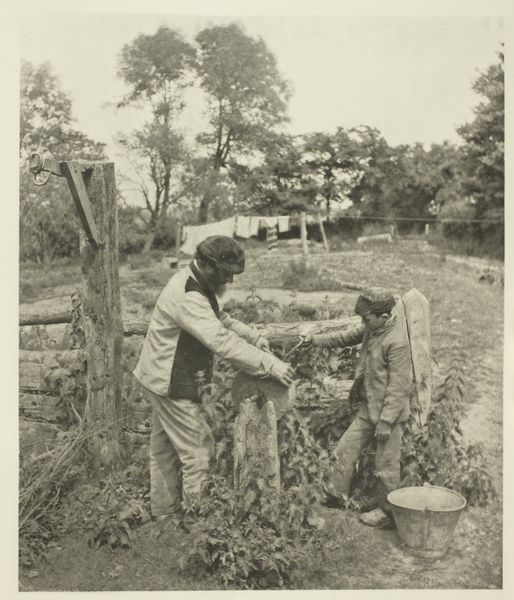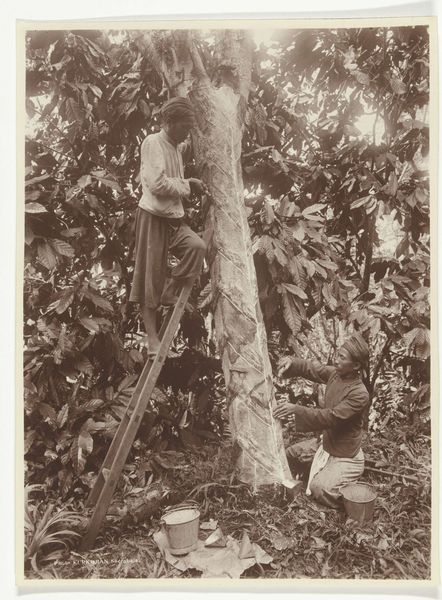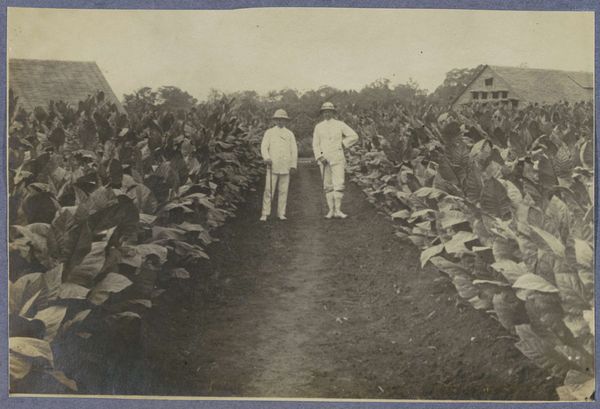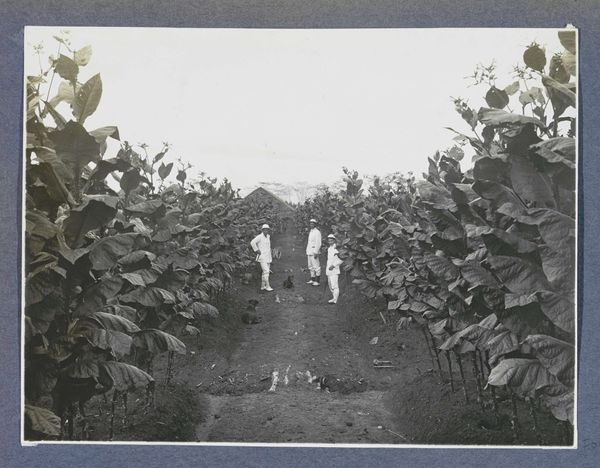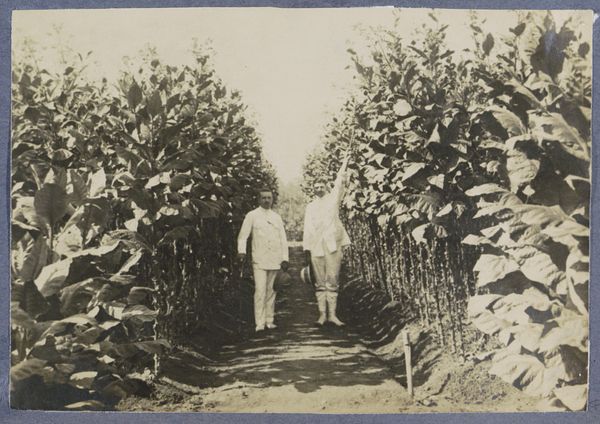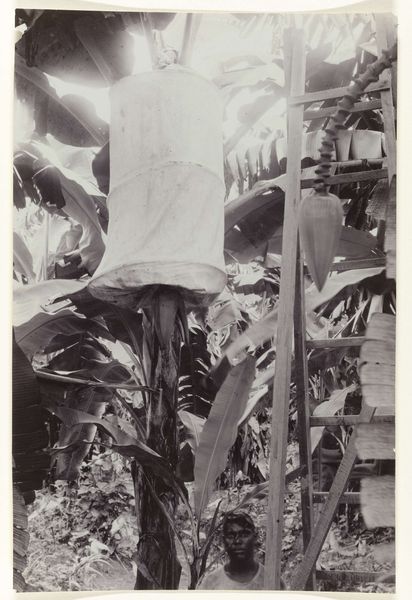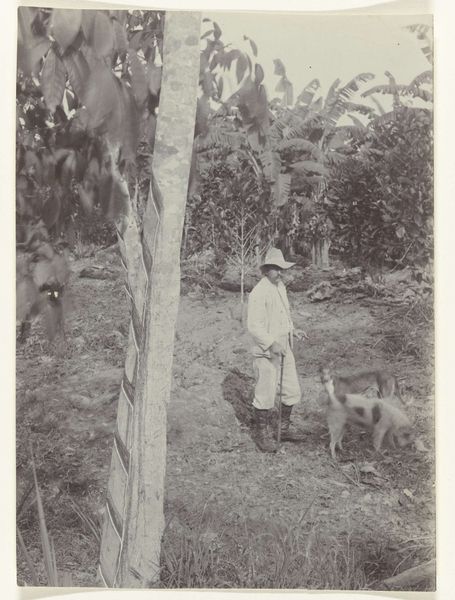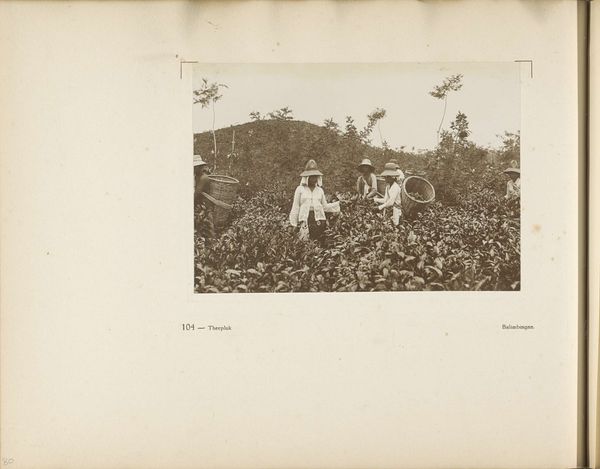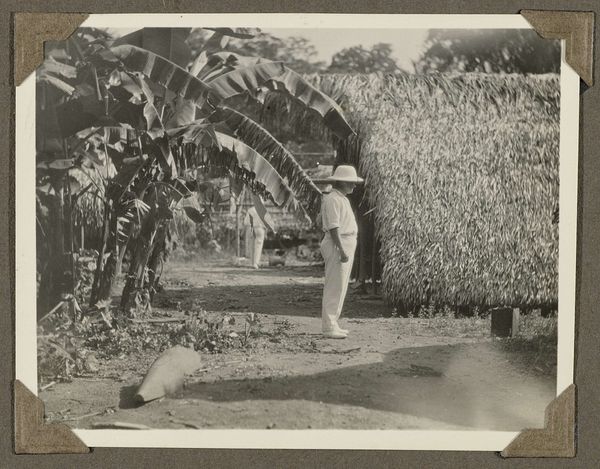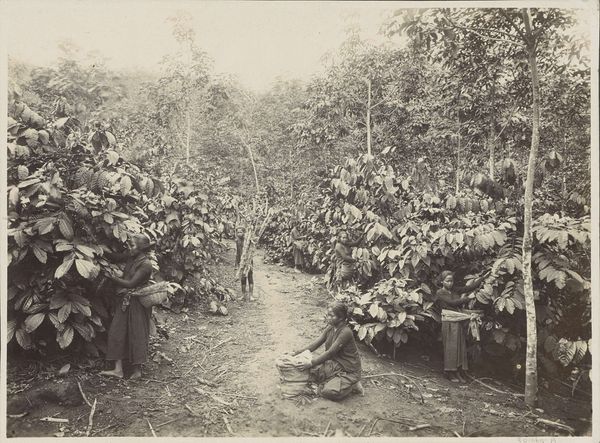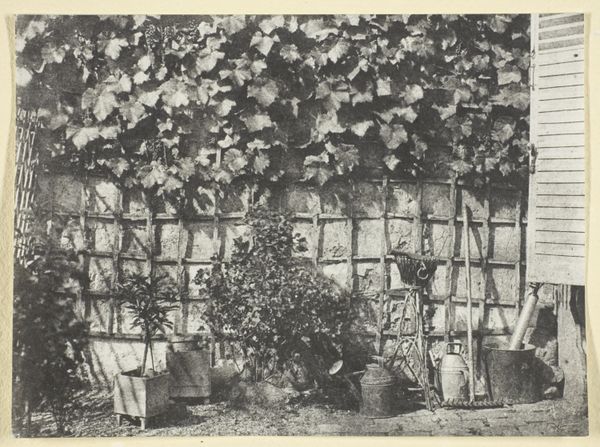
Plantage-eigenaar met contractarbeiders op plantage Accaribo te Suriname 1916 - 1930
0:00
0:00
photography, albumen-print
#
portrait
#
african-art
#
landscape
#
photography
#
group-portraits
#
orientalism
#
genre-painting
#
albumen-print
Dimensions: height 15.5 cm, width 11 cm
Copyright: Rijks Museum: Open Domain
Editor: This albumen print, titled "Plantage-eigenaar met contractarbeiders op plantage Accaribo te Suriname," shows a plantation owner with contracted laborers, captured sometime between 1916 and 1930. It's a photograph dripping with the atmosphere of the colonial era. I find the composition starkly divided, the owner standing, the laborers seated... it feels incredibly weighted. What story do you think this image tells? Curator: Oh, stories upon stories, woven into that sepia tone. I see a visual power dynamic played out in the literal framing, don't you think? That white suit cutting through the dense foliage and the posture of the workers really speaks to it, almost a theatrical staging of unequal power dynamics. Think of all the photographs not taken, the voices never heard. Does the anonymity of the photographer perhaps speak to the lack of interest in properly recording these individuals' suffering? It hits you right in the gut, doesn't it? Editor: It does. It makes me think about the gazes, how averted the laborers’ eyes seem compared to the direct stare of the plantation owner. Is this common in these kinds of photographs from the period? Curator: Absolutely. That averted gaze can be a window into the internal landscape, revealing volumes of unvoiced resistance or forced compliance, wouldn't you say? Perhaps this "resistance" or other emotions are what African art speaks of, because sometimes they can look so very similar to external gazes. These albumen prints also age so gracefully. I have so many thoughts. Editor: So much to unpack. It’s interesting to consider how the photograph, ostensibly a neutral recording, is actually so loaded with unspoken narratives. Curator: Exactly! It's a poignant reminder that what's left unsaid often screams the loudest. Photography can be a silent, potent witness. What resonates the most with you, thinking about all of this?
Comments
No comments
Be the first to comment and join the conversation on the ultimate creative platform.
